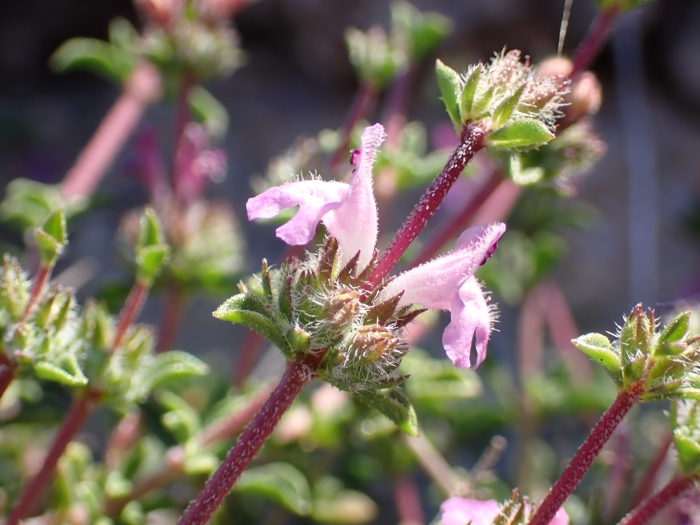Savory Of Crete
(Satureja thymbra)
Savory Of Crete (Satureja thymbra)
/
/

© Elias
CC BY 4.0
Image By:
© Elias
Recorded By:
Copyright:
CC BY 4.0
Copyright Notice:
Photo by: © Elias | License Type: CC BY 4.0 | License URL: http://creativecommons.org/licenses/by/4.0/ | Uploader: elias105 | Publisher: iNaturalist |

























Estimated Native Range
Summary
Satureja thymbra, commonly known as savory of Crete, is a perennial herb and a dwarf shrub native to the Eastern Mediterranean region, including Libya, southeastern Europe from Sardinia to Turkey, Cyprus, Lebanon, and Israel. It typically grows to heights of 8-20 inches with a bushy habit, featuring dark-green, glossy leaves on compact branches. From March to June, it produces pink to purple flowers that are highly attractive to pollinators. The plant is well-adapted to Mediterranean woodlands, garrigue (scrubland), rocky limestone areas, and can often be found alongside dirt roads.
Savory of Crete is valued for its aromatic foliage and ornamental flowers, making it a suitable choice for herb gardens, rockeries, and as a ground cover in sunny locations. It thrives in well-drained, terra rossa and hard limestone soils, and requires little maintenance once established. Its leaves are rich in essential oils, particularly carvacrol, γ-terpinene, and p-cymene, which are believed to have medicinal properties. However, due to its protected status in Israel, cultivation and harvesting should be done responsibly. In areas with similar climates, it can be used as a culinary herb, adding a peppery flavor to dishes.CC BY-SA 4.0
Savory of Crete is valued for its aromatic foliage and ornamental flowers, making it a suitable choice for herb gardens, rockeries, and as a ground cover in sunny locations. It thrives in well-drained, terra rossa and hard limestone soils, and requires little maintenance once established. Its leaves are rich in essential oils, particularly carvacrol, γ-terpinene, and p-cymene, which are believed to have medicinal properties. However, due to its protected status in Israel, cultivation and harvesting should be done responsibly. In areas with similar climates, it can be used as a culinary herb, adding a peppery flavor to dishes.CC BY-SA 4.0
Plant Description
- Plant Type: Shrub, Herb
- Height: 1-2 feet
- Width: 1-1.5 feet
- Growth Rate: Moderate
- Flower Color: Purple
- Flowering Season: Summer
- Leaf Retention: Evergreen
Growth Requirements
- Sun: Full Sun
- Water: Low
- Drainage: Fast
Common Uses
Bee Garden, Drought Tolerant, Edible*Disclaimer: Easyscape's listed plant edibility is for informational use. Always verify the safety and proper identification of any plant before consumption., Fragrant, Groundcover, Low Maintenance, Rock Garden
Natural Habitat
native to the Eastern Mediterranean region, including Libya, southeastern Europe from Sardinia to Turkey, Cyprus, Lebanon, and Israel
Other Names
Common Names: Bean Herb, Cretan Savory
Scientific Names: , Satureja thymbra, Clinopodium thymbra, Micromeria thymbra, Satureja biroi, Satureja collina, Satureja hispida, Satureja thymbra var. calvescens, Satureja tragoriganum, Thymbra hirsuta
GBIF Accepted Name: